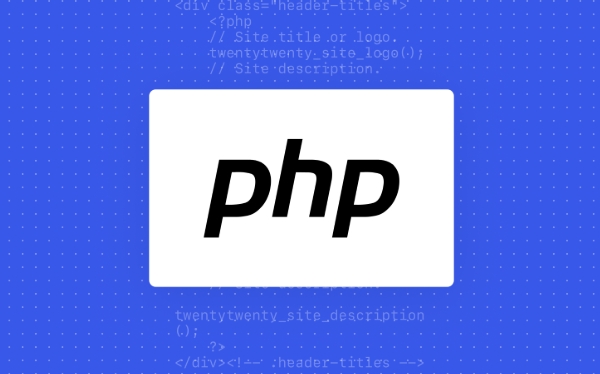Improving Readability with Comments
The key to writing good comments is to explain "why" rather than just "what was done" to improve the readability of the code. 1. Comments should explain logical reasons, such as considerations behind value selection or processing; 2. Use paragraph comments for complex logic to summarize the overall idea of functions or algorithms; 3. Maintain comments regularly to ensure consistency with the code, avoid misleading, and delete outdated content if necessary; 4. Check comments synchronously when reviewing the code, and record public logic through documents to reduce the burden of code comments.

No matter how well the code is written, if no one can understand it, it will be useless. Writing comments is not an unnecessary move, but allowing others (including their future self) to understand your ideas faster. Especially in projects where multiple people collaborate or long-term maintenance, annotations are the most direct way to improve readability.

Comments should explain "why", not just "what did"
What do many people do when writing comments habitually repeating code, such as:
# Set variable x to 5 x = 5
This kind of comment is actually useless. What is really useful is to explain the logic behind this code, such as why you choose this value, or why you deal with it in this way.

For example:
# Use 5 as the default value, because the minimum input is 5 x = 5
Those who read this way will know that this is not written casually, but has a specific reason. Don't just say what you did, but make it clear why you did it.

Add paragraph comments to complex logic
Some functions or algorithms have a lot of logic, and it is easy to be confused when looking at the code directly. At this time, you can write a short explanation at the beginning to explain the overall idea clearly.
For example, a piece of code that deals with data cleaning:
# Data cleaning steps:
# 1. Remove outliers (values exceeding 3 times the standard deviation)
# 2. Use forward padding for missing values# 3. Convert categorical variables to one-hot encoding def clean_data(df):
...In this way, someone can know the general process of this code by scanning it, and there is no need to guess it one by one. Especially for those who just took over, this structured annotation is very friendly.
Notes should also be maintained regularly, so don't let them become misleading
Many people no longer care about comments after writing the code. As a result, the code has been changed for several rounds, and the comments are still the same. This situation is worse than not writing comments because it can mislead others.
It is recommended to update the comments when modifying the key logic, even if it is simply adjusting the wording. If you find that a comment is no longer in line with the code, don't hesitate. It is better to delete it than to leave it misleading.
Additionally, consider the following practices to maintain the quality of the annotation:
- When reviewing PR, check whether relevant comments need to be updated
- Record public logic in documents or wikis, avoid using code comments to explain complex logic
- Delete obviously outdated and meaningless comments, such as
# TODO: 这个地方需要优化but has not been changed
Basically that's it. Notes are not written as much as you want, but rather they must be written accurately and clearly. If used well, it is the instruction manual of the code; if used poorly, it becomes noise.
The above is the detailed content of Improving Readability with Comments. For more information, please follow other related articles on the PHP Chinese website!

Hot AI Tools

Undress AI Tool
Undress images for free

Undresser.AI Undress
AI-powered app for creating realistic nude photos

AI Clothes Remover
Online AI tool for removing clothes from photos.

Clothoff.io
AI clothes remover

Video Face Swap
Swap faces in any video effortlessly with our completely free AI face swap tool!

Hot Article

Hot Tools

Notepad++7.3.1
Easy-to-use and free code editor

SublimeText3 Chinese version
Chinese version, very easy to use

Zend Studio 13.0.1
Powerful PHP integrated development environment

Dreamweaver CS6
Visual web development tools

SublimeText3 Mac version
God-level code editing software (SublimeText3)

Hot Topics
 Commenting Out Code in PHP
Jul 18, 2025 am 04:57 AM
Commenting Out Code in PHP
Jul 18, 2025 am 04:57 AM
There are three common methods for PHP comment code: 1. Use // or # to block one line of code, and it is recommended to use //; 2. Use /.../ to wrap code blocks with multiple lines, which cannot be nested but can be crossed; 3. Combination skills comments such as using /if(){}/ to control logic blocks, or to improve efficiency with editor shortcut keys, you should pay attention to closing symbols and avoid nesting when using them.
 Tips for Writing PHP Comments
Jul 18, 2025 am 04:51 AM
Tips for Writing PHP Comments
Jul 18, 2025 am 04:51 AM
The key to writing PHP comments is to clarify the purpose and specifications. Comments should explain "why" rather than "what was done", avoiding redundancy or too simplicity. 1. Use a unified format, such as docblock (/*/) for class and method descriptions to improve readability and tool compatibility; 2. Emphasize the reasons behind the logic, such as why JS jumps need to be output manually; 3. Add an overview description before complex code, describe the process in steps, and help understand the overall idea; 4. Use TODO and FIXME rationally to mark to-do items and problems to facilitate subsequent tracking and collaboration. Good annotations can reduce communication costs and improve code maintenance efficiency.
 Improving Readability with Comments
Jul 18, 2025 am 04:46 AM
Improving Readability with Comments
Jul 18, 2025 am 04:46 AM
The key to writing good comments is to explain "why" rather than just "what was done" to improve the readability of the code. 1. Comments should explain logical reasons, such as considerations behind value selection or processing; 2. Use paragraph annotations for complex logic to summarize the overall idea of functions or algorithms; 3. Regularly maintain comments to ensure consistency with the code, avoid misleading, and delete outdated content if necessary; 4. Synchronously check comments when reviewing the code, and record public logic through documents to reduce the burden of code comments.
 Quick PHP Installation Tutorial
Jul 18, 2025 am 04:52 AM
Quick PHP Installation Tutorial
Jul 18, 2025 am 04:52 AM
ToinstallPHPquickly,useXAMPPonWindowsorHomebrewonmacOS.1.OnWindows,downloadandinstallXAMPP,selectcomponents,startApache,andplacefilesinhtdocs.2.Alternatively,manuallyinstallPHPfromphp.netandsetupaserverlikeApache.3.OnmacOS,installHomebrew,thenrun'bre
 Writing Effective PHP Comments
Jul 18, 2025 am 04:44 AM
Writing Effective PHP Comments
Jul 18, 2025 am 04:44 AM
Comments cannot be careless because they want to explain the reasons for the existence of the code rather than the functions, such as compatibility with old interfaces or third-party restrictions, otherwise people who read the code can only rely on guessing. The areas that must be commented include complex conditional judgments, special error handling logic, and temporary bypass restrictions. A more practical way to write comments is to select single-line comments or block comments based on the scene. Use document block comments to explain parameters and return values at the beginning of functions, classes, and files, and keep comments updated. For complex logic, you can add a line to the previous one to summarize the overall intention. At the same time, do not use comments to seal code, but use version control tools.
 Learning PHP: A Beginner's Guide
Jul 18, 2025 am 04:54 AM
Learning PHP: A Beginner's Guide
Jul 18, 2025 am 04:54 AM
TolearnPHPeffectively,startbysettingupalocalserverenvironmentusingtoolslikeXAMPPandacodeeditorlikeVSCode.1)InstallXAMPPforApache,MySQL,andPHP.2)Useacodeeditorforsyntaxsupport.3)TestyoursetupwithasimplePHPfile.Next,learnPHPbasicsincludingvariables,ech
 PHP Development Environment Setup
Jul 18, 2025 am 04:55 AM
PHP Development Environment Setup
Jul 18, 2025 am 04:55 AM
The first step is to select the integrated environment package XAMPP or MAMP to build a local server; the second step is to select the appropriate PHP version according to the project needs and configure multiple version switching; the third step is to select VSCode or PhpStorm as the editor and debug with Xdebug; in addition, you need to install Composer, PHP_CodeSniffer, PHPUnit and other tools to assist in development.
 PHP Commenting Syntax
Jul 18, 2025 am 04:56 AM
PHP Commenting Syntax
Jul 18, 2025 am 04:56 AM
There are three common ways to use PHP comments: single-line comments are suitable for briefly explaining code logic, such as // or # for the explanation of the current line; multi-line comments /*...*/ are suitable for detailed description of the functions or classes; document comments DocBlock start with /** to provide prompt information for the IDE. When using it, you should avoid nonsense, keep updating synchronously, and do not use comments to block codes for a long time.







